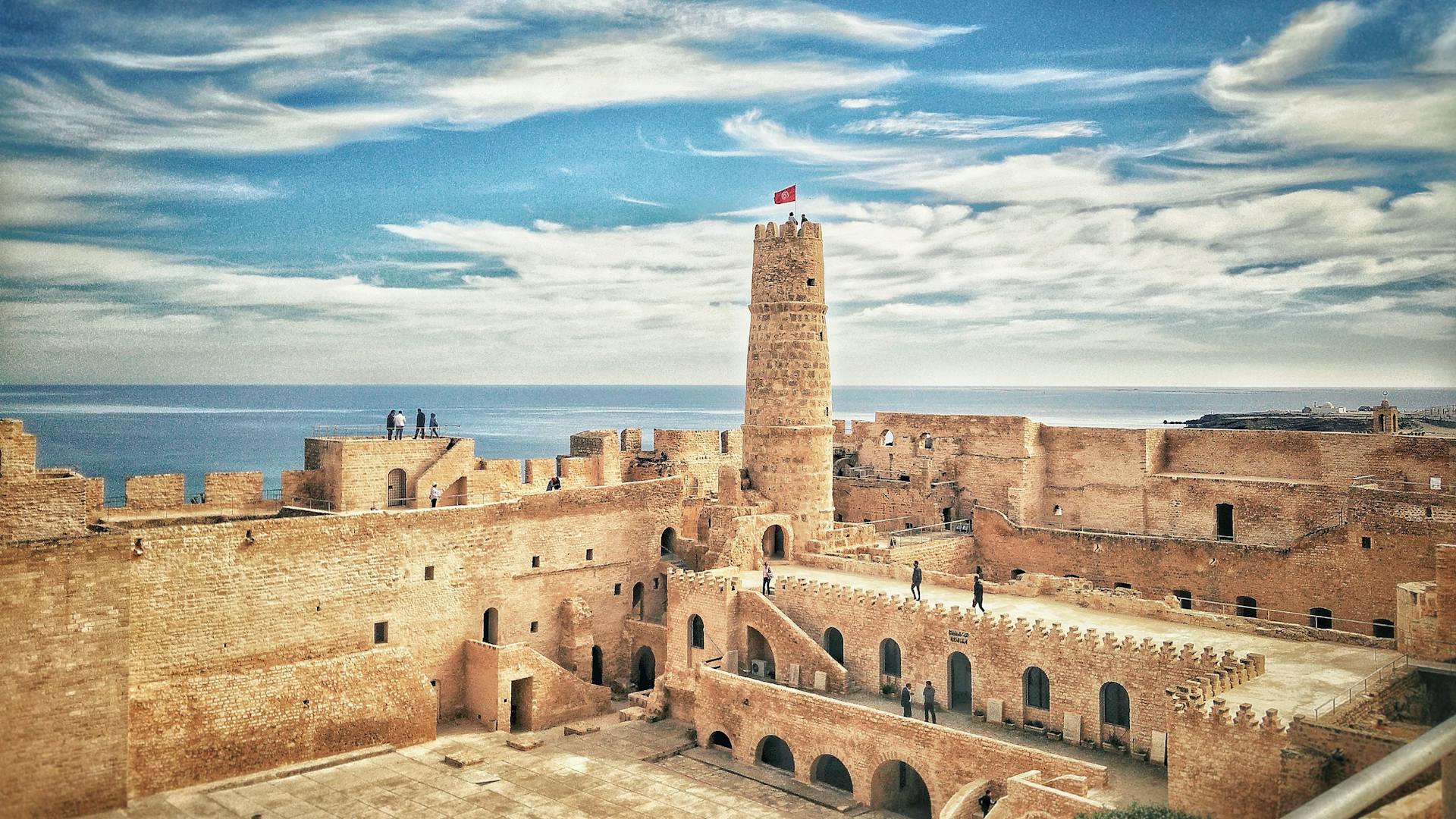
Monastir is more than just a coastal city—it's a tapestry of history, culture, and Mediterranean charm. Nestled on a peninsula in Tunisia’s Sahel, it delivers stunning beaches, centuries-old monuments, and lively traditions. Here’s an in-depth look:
– Origins & architecture: Established in 796 by Governor Harthama ibn A'yan, this is the oldest Arab ribat in North Africa. The structure once guarded against Byzantine fleets and evolved over centuries with new towers and winding staircases .
– Visitor experience: Today it’s a labyrinth of ancient courtyards, mosques, and a museum featuring Islamic artifacts. Those who climb its watchtower are rewarded with sweeping views of the city and ocean, and cultural events are sometimes staged in its historic courtyard .
Great Mosque of Monastir: A 9th-century marvel that evolved through the 11th, Hafsid, and 18th centuries. Known for its elegant arches, Kufic mihrab, and tall stone minaret, it remains a landmark beside the ribat (en.wikipedia.org).
Bourguiba Mausoleum: The ornate resting place of President Habib Bourguiba, adorned with a golden dome flanked by two green ones and twin 25 m Italian marble minarets. Built in the 1960s, it features dazzling glass inlays and a richly adorned interior.
Old Medina: A more intimate variant of Tunisia’s medinas, with narrow lanes, artisan stalls and local markets selling ceramics, leather goods, carpets, and spices.
Harbour & promenade: The popular Corniche stretches along the coast, dotted with cafés, seafood restaurants, and yachts. It’s perfect for scenic strollers, especially at sunset.
El Ksar & Al‑Qurayyah beaches: Pristine sands and clear turquoise waters, ideal for swimming, sunbathing, and a host of water sports—jetskiing, parasailing, boating
La Falaise (the Cliff): Dramatic sea cliffs with carved walkways offering panoramic seabed views—a favorite spot for swimming and light cliff diving.
Day-trip delight: Kuriat Islands: Short boat trips bring visitors to peaceful islets famous for crystal-clear waters and occasional turtle sightings—an unforgettable nature retreat.
Museum of Islamic Art (within the ribat): Boasts over 300 treasures, including ancient glassware, carved wood, astrolabes, coins, and Quranic manuscripts spanning the 7th–14th centuries.
Folk Arts & Traditions Museum: Focused on regional costumes and wedding attire, highlighting silk, gold, and silver embroidery from the 19th–20th centuries.
Festivals & musical heritage: Cultural life thrives through Mawlid celebrations, Olive Festivals, and events spotlighting local “Mizi” music and “Houari” dance. The International Festival of Monastir also draws artists from around the globe.
University city: Home to the University of Monastir (est. 2004), the city has grown into an academic center with faculties in engineering, medicine, fashion, and biotechnology—housing around 27,000 students.
Sporting pride: Local teams US Monastir (football and basketball) play in municipal stadiums, with the basketball team notably winning the Basketball Africa League in 2022.
Airport: Monastir–Habib Bourguiba International Airport serves flights from across Europe, just 9 km from town via metro or taxis.
Rail & bus: The meter-gauge Sahel Metro connects Monastir with Sousse and Mahdia; local buses and louages enable easy travel to neighboring towns like Sousse, Kairouan, and El Jem.
When to go: Spring (March–May) and autumn (September–November) offer mild temperatures (20–25 °C) and fewer tourists. Summers can be hot (30–35 °C), while winters are mild with occasional rain .
Experiences not to miss: Climb the ribat at sunrise for spectacular coastal views. Wander the medina’s alleys, savor seaside dining, and catch a cultural performance at a museum or fort. Try local specialties like couscous, brik, seafood, and homemade sweets like makroud.
Monastir makes a perfect launching point for day-trips to:
Sousse: Mediterranean-level mediaeval medina & art museums
Kairouan: Tunisia’s spiritual capital with its Great Mosque
El Jem: Home to a colossal Roman amphitheatre
Mahdia: Quiet beaches and charming old fishing-town ambience
A city where azure seas meet redolent souks, ancient fortresses blend with modern universities, and cultural traditions blend with warm hospitality. Monastir enchants travelers with its mix of relaxation, exploration and historical wonder—truly a jewel of Tunisia’s Sahel.